The other day in my sociology class we were given a statistic that upset me, but after I thought about it, didn’t surprise me: In 1950, fewer than five percent of Republicans or Democrats reported they would be upset if their child married someone from the other party. Today, that number is 50 percent.
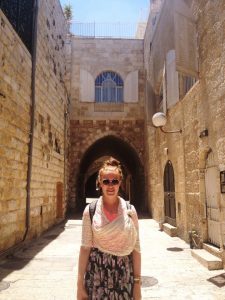
My sister Emma in Jerusalem
This got me thinking about a discussion we’ve had in ASTU about the concept of “us vs them”. After 9/11, America went on the defensive, blazing its red, white & blue, while condemning any opposition. That has yet to change. One of the major things I’ve realized in my life is that people are unable to see anything as beyond black and white. There is always a right answer and a wrong answer. Anything you say is dumb, because my opinion is correct. Because of this, people fight exclusively by shouting, protesting, and blocking their ears to anything they don’t like.
Subsequently I’ve realized that in fact, black and white is almost never the case. So many debated topics could be solved if people were willing to have open-minded discussions and actually listen to one another. Despite my realizations, I can’t help but be divided on a current global topic that affects me in a very small way, but because of my background I have been forced to confront: the Israeli-Palestinian conflict.
I’m Jewish, (emphasis on the -ish). I’m not religious, I’ve only been to a synagogue a handful of times, and that was for my many cousins’ bar/bat mitzvah’s and various community activities. Despite this, I still identify with being Jewish. My family recognizes the major holidays, and my sisters and I have participated
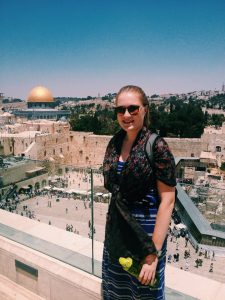
My sister Eireann in Jerusalem
in Jewish community events and gatherings. Even though I’ve never been to Hebrew school and Judaism is not a frequent topic of discussion in my house, I’ve always been interested in Jewish customs, history, and religious practices. Along with this research I’ve done what searching I can on the situation in Israel, but I remain torn.
Both my parent are pro-Israel. Even my dad who’s not Jewish, he’s Catholic. My mom has some extended family there, and as a young woman she lived there for eight months on a kibbutz called S’dot Yam, just south of Haifa. My sisters don’t really talk about the subject, but they’ve been to Israel on a trip called Birthright (Taglit in Hebrew). Birthright is a tour program that allows young Jewish people to travel to Israel for free. The experience is paid for by philanthropists, and the organization’s goal is to get as many young people as possible to go to Israel and connect them to their Jewish Identity. My sisters loved their experience and talk about it all the time. I can’t help but be fascinated with a country with such interesting culture and fascinating history. But then I am reminded if the conflict, and the fact that I have the very real opportunity to travel across the world for free instead becomes a burden.
My dilemma basically comes down to my sympathy for both sides of the conflict. I am fortunate enough to not have any relatives who were victims of the holocaust. My mom’s parents were born and raised in South Africa, faraway from any danger. I still understand that Jews have been victims of discrimination for millennium, and that giving them a land to be safe from harm and to help them prosper was an essential part of protecting them. But my vision doesn’t stop there. I see the innocent Palestinians who were forced to leaves their homes, and those who are killed unjustifiably by Israeli military. I disagree with the recent decision by Israel to create more settlements in the West Bank, but opinions like these lead to feelings that I’m distancing myself from the place I’m supposed to call my homeland.
When I see someone who has suffered, their religion, ethnicity, and nationality becomes irrelevant to me. Whether someone is killed by a suicide bomb or a senseless soldier, I grieve. I can never rejoice at someone’s death, regardless of what “side” I’m on. Ultimately, when it comes to the Israeli-Palestinian conflict, I believe that no one is “right” and no one is “wrong”. I believe the answer is negotiated peace, and it could be so easy, but no one is willing to take that chance.
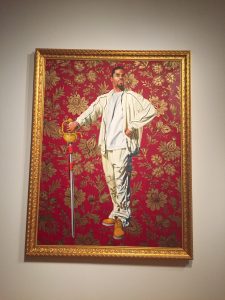
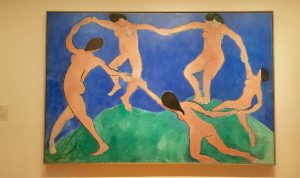
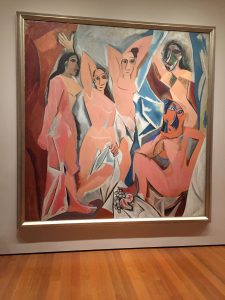
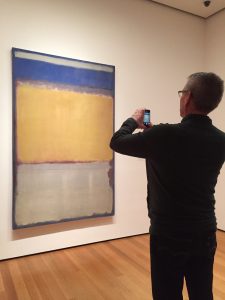

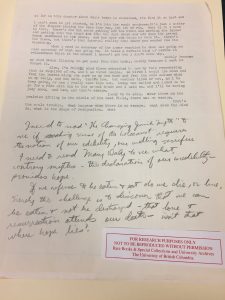
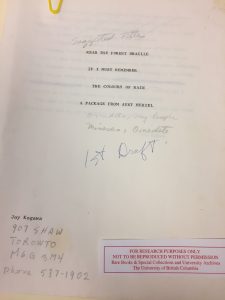
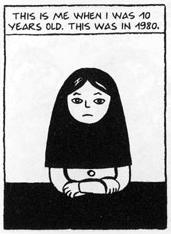 any women choosing not to leave their house, and some committing suicide. Many wearer’s of the chador compared the ban to feeling naked.
any women choosing not to leave their house, and some committing suicide. Many wearer’s of the chador compared the ban to feeling naked. 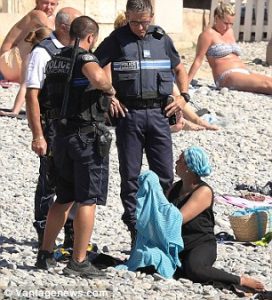 n a beach being forced to remove her burkini by several French police officers has gone viral. The image serves as visual metaphor for the actual issue at hand.
n a beach being forced to remove her burkini by several French police officers has gone viral. The image serves as visual metaphor for the actual issue at hand.